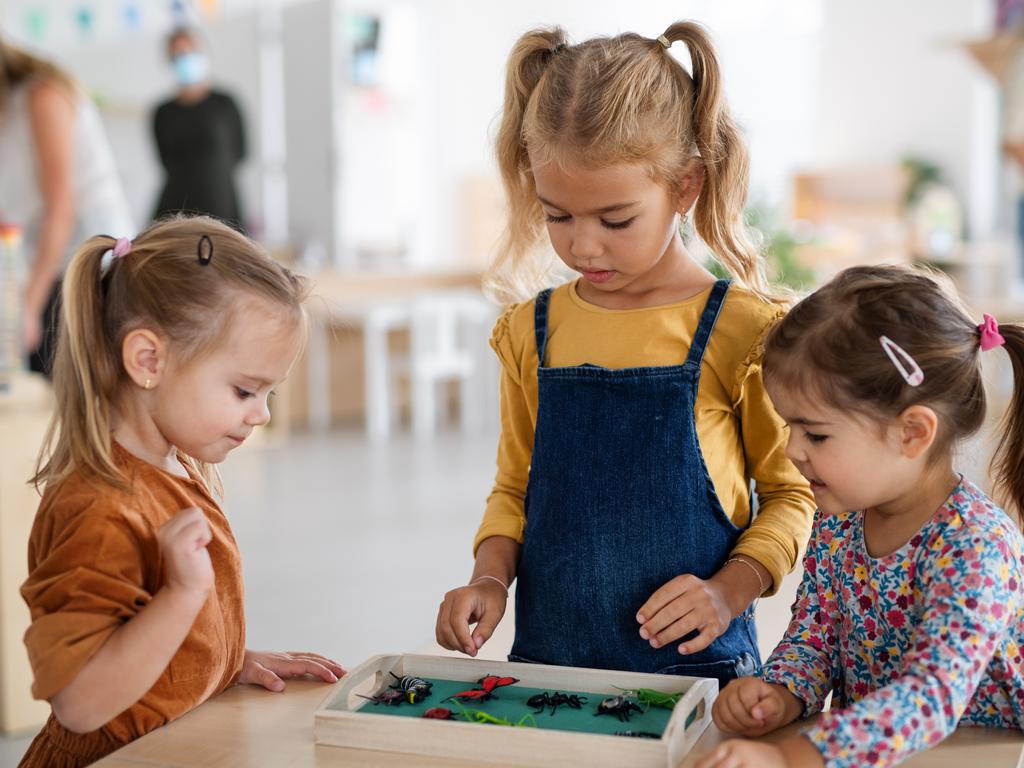Artificial intelligence to the rescue of stretched teachers
The first AI classroom assistants will save teachers hours every week in planning lessons and assignments, using a censored chatbot custom-built for the NSW school system.

The first AI classroom assistants will save teachers hours every week in planning lessons and assignments, using a censored chatbot custom-built for Australia’s biggest schooling system.
The NSW Education Department is working with Microsoft to build a “child-safe” version of the artificial intelligence (AI) chatbot ChatGPT.
The AI tool, dubbed NSWEduChat, prevents students from using the chatbot to cheat by writing entire essays and assignments.
Instead, the AI chatbot converses with students, prompting them with questions and suggestions designed to make them think for themselves.
The chatbot only responds to questions that relate to school activities and education-related content.
The technology is embedded with safeguards to monitor and remove inappropriate content, such as pornography, violence and swearing.
It draws upon the Australian national curriculum and NSW syllabus, and prioritises answers that are most relevant to NSW schools.
The AI is designed to be “safe and ethical’’ for use by children, in line with the Australian Framework for Generative AI in schools, which was signed off by all education ministers last October.
The technology will be trialled for six months in 16 NSW public schools – including 10 high schools and four primary schools.
Students will be able to access the AI app for free, through the NSW Education Department’s student portal.
Data used by the app – including student names, search terms and test results – will be encrypted and visible only to the Education Department.
The department’s executive director of educational standards, Dr Paul Wood, said NSWEduChat would provide accurate and unbiased information to students.
“It draws upon a wide range of content including the NSW syllabus and Australian curriculum,’’ he said.
“Unlike freely available versions, it will utilise Australian content first.
“The app’s responses are already high quality and relevant to NSW classrooms, (but) responses will continue to be refined during the trial.’’
Dr Wood said the app was designed to promote “critical thinking’’ in classrooms.
“We use Socratic questioning so that the app is designed in a way that if you put into the app, ‘Can you please write me an essay on Hamlet?’ it will not write you the essay,’’ he said.
“It will come back and ask you some questions that will prompt you to think a bit more critically about what you already know.
“So it might come back with the response that says, ‘I can help you with your essay: can you tell me who are the main characters in Hamlet you would like to focus your essay on?
“Students will start to engage in a bit of a conversation with the app, but the app won’t provide an essay in response.’’
One of the first schools to use the new AI chatbot is The Ponds High School, in Sydney’s northwest, where deputy principal James Laird has already used the AI to write plans for engineering lessons, using the in-built “teacher tool’’.
“I’ve been able to generate the material and teaching notes, and I saved 20 minutes per lesson,’’ he said yesterday.
“It has the potential to save hours a week.’’

School principal Jenny Weal said teachers could use the chatbot to translate lessons into mother-tongue languages for migrant students who had not yet mastered English.
Teachers could also use the chatbot to tailor standard lessons to suit children of different ages and academic abilities, including children with disabilities.
“This can decrease the workload for teachers, mainly to tailor and differentiate learning to individual students,’’ she said.
“If there is a child who doesn’t understand the vocabulary used in a lesson, (the chatbot) can translate it so the child can learn in their own language.’’
Ms Weal said she had been teaching since 1987, and remembered the alarm over the introduction of scientific calculators, the internet and laptops in schools.
“This is the new internet, and we have to jump on board and teach our kids how to use it,’’ she said.
“If we don’t embrace it we’re going to fall behind.’’
NSW Education Minister and deputy Premier Prue Car said NSW was one of the world’s largest providers of public education.
“I’m proud that NSW has developed a safe and secure tool with great potential to enhance learning, and give students valuable hands-on experience with this game-changing technology,’’ she said.
South Australia conducted a similar trial in collaboration with Microsoft last year.







To join the conversation, please log in. Don't have an account? Register
Join the conversation, you are commenting as Logout